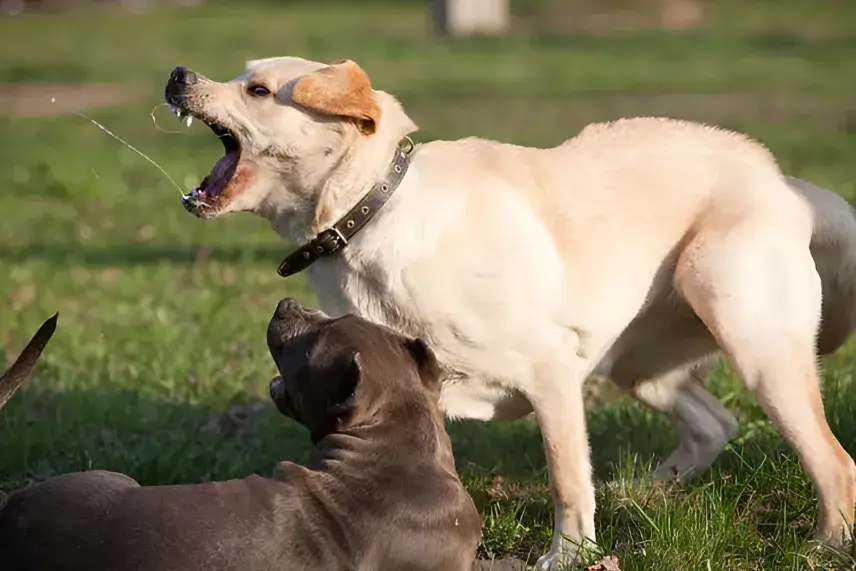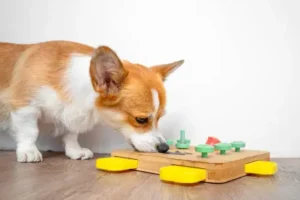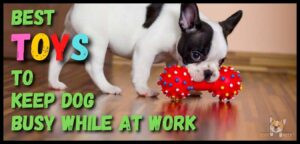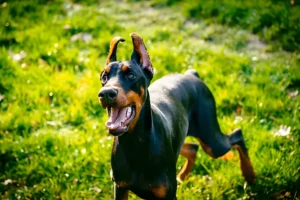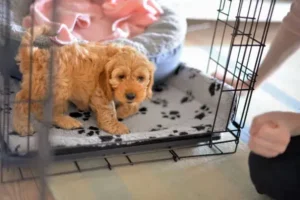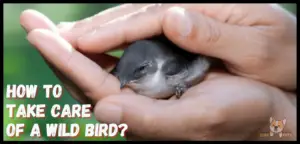A growl is a warning signal, not always a sign of aggression. If your dog is growling at other dogs, it’s important to understand the trigger behind the behavior in order to address it effectively.
Why Dogs Growl at Other Dogs: It’s Not Just Aggression
Fear/Anxiety: Dogs may growl if they feel threatened, cornered, or unsure of a situation involving another dog. Look for tense body language like a tucked tail or cowering.
Resource Guarding: Your dog may growl when guarding toys, food, territory, or even you.
Pain or Injury: If your dog is hurt, growling might be their way to ask for space and avoid further discomfort.
Playful, But Misunderstood: Exuberant play sometimes includes growling which can be misinterpreted by other dogs (and people).
Decoding Dog Body Language: What’s Your Dog Saying?
Aggressive Growl: Deep, long, accompanied by tense posture, bared teeth, raised hackles, and a hard stare.
Fearful Growl: Low, trembling, often with submissive body language like a lowered head and tucked tail.
Resource Guarding Growl: Often focused towards the item being guarded, with stiff posture and a direct gaze.
Playful Growl: Short, higher-pitched, accompanied by loose, wiggly body movements and “play bows”.
What to Do When Your Dog Growls at Other Dogs
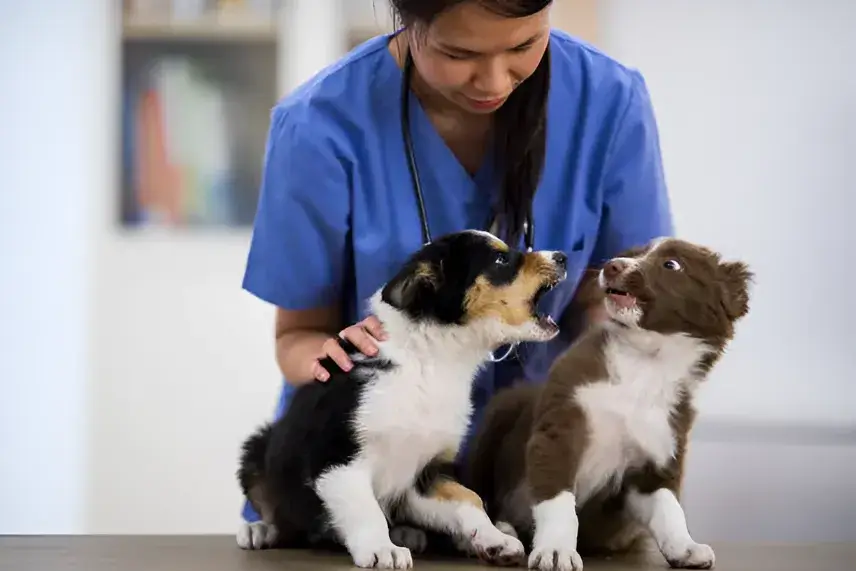
Stay Calm: Don’t punish or scold – this will increase anxiety and make the behavior worse.
Identify the Trigger: Is it fear, guarding, new situations? Understanding the ‘why’ is key to training.
Management First: Avoid situations that trigger growling while you focus on training. This might mean shorter walks, controlled introductions, or muzzle training for safety.
Training Strategies (Tailored to the Cause):
Fear/Anxiety: Use positive reinforcement to build confidence. Controlled introductions with calm, friendly dogs at a distance are helpful.
Resource Guarding: Teach commands like “leave it” and “drop it”. Create safe spaces and manage resources while desensitizing your dog around possessions.
Pain: If you suspect an injury, consult your veterinarian immediately.
Play: If misunderstandings are the issue, teach clear “play over” signals.
When to Seek Professional Help
- If the growling is intense or unpredictable
- If you’re unsure of the cause of the behavior
- If you’re struggling to manage the situation safely
- If the growling escalates to aggression
Important Reminder: A growl is communication, and suppressing it can lead to bites without warning.
Real-Life Examples: Decoding Dog Growls
Case 1: Fearful at the Vet
- Scenario: A dog cowers in the waiting room and growls when the vet tech approaches for an examination.
- Solution: Work with your vet on positive reinforcement techniques. This might include:
- Short, positive “meet and greet” visits with treats, but without exams
- Teaching calm behaviors on a towel or mat that becomes a “safe space”
- Your vet may suggest mild anti-anxiety medication for more severe cases
Case 2: Resource Guarding Between Housemates
- Scenario: Two dogs in the same household growl over a favorite chew toy.
- Solution:
- Management strategies like separate feeding areas to prevent competition.
- Training high-value “leave it” and “drop it” commands with lots of rewards
- Rotating toys so no single item becomes too precious
Troubleshooting/ What If…
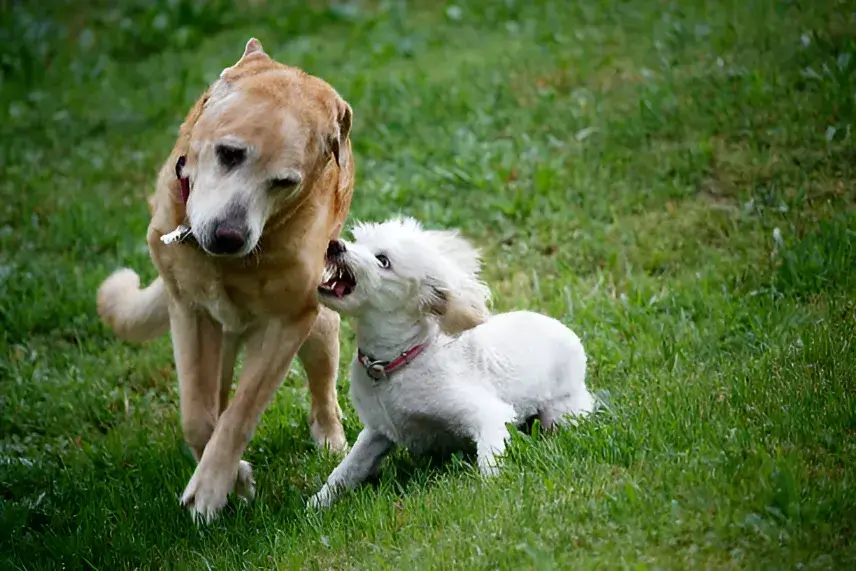
My dog growls at specific breeds, why?
- Explanation: Your dog may have had a negative experience with a similar-looking dog, or be generalizing that appearance as a threat.
- Solution: Manage introductions carefully. Start with sightings at a distance with positive reinforcement and work up gradually if the dog shows relaxation.
My dog growls but then wags his tail, is he confused?
- Explanation: Tail wagging isn’t always a sign of happiness. It can signal arousal. Look for the whole picture. Are the wags loose and full, or tight and stiff?
- Solution: Focus on other body language: relaxed posture, play bows, and short, higher-pitched growls likely mean it’s all in good fun.
Myth-Busting
Myth: If your dog growls, they’re dominant.
- Fact: Growling is about communication, not a power grab. Dogs growl to express a whole range of emotions.
Myth: Growling dogs are just bad dogs.
- Fact: Most dogs can learn to overcome growling tendencies through understanding the root cause and working on training and management.
Conclusion
Growling is a dog’s way of expressing how they feel. By learning to decipher your dog’s growls and finding the root cause, you can work together to build a stronger bond and make their world a little less overwhelming.
The photo featured below the post headline is Credit: Alex Potemkin/gettyimages
I hope you find this post helpful and informative. If Yes’ feel free to share it with your friends!
Frequently Asked Question
My dog never used to growl, but now does. Why the change?
This could indicate pain, illness, developing anxiety, or a recent stressful experience. If the change is sudden, a vet checkup is the first step.
Is it okay to punish a dog for growling?
No! Punishing a growl teaches your dog to hide their warning signals, increasing the risk of a bite without warning.
Will my dog grow out of this behavior?
Sometimes, especially if it’s play-related. However, most causes of growling require training and management for improvement.
Why has my dog become aggressive towards other dogs out of the blue?
Consider these possibilities:
Is your dog hurting? Sudden aggression can be a sign of an injury or illness that needs veterinary attention.
Did something scary happen? A bad experience on a walk or at the dog park might have left your dog feeling defensive.
Is your dog getting older? Senior dogs sometimes develop new anxieties and may become less tolerant.
Should you let dogs growl at each other?
Brief, low-intensity growling might be part of normal dog communication. However, if growling escalates, or if one dog is clearly showing fear, it’s safest to separate the dogs and address the underlying issue.
How do you respond if your dog growls at you?
Stay calm. Try to understand what triggered the growl. Was it possessive of a resource, or did you startle your dog unknowingly? Avoid punishment and focus on removing the trigger if possible.
Why does my dog growl at some dogs and not others?
Your dog might dislike certain breeds, sizes, or energy levels in other dogs. This could stem from a past negative experience or simply limited socialization.
Why does my dog growl at me for no reason?
There’s always a reason, even if we don’t immediately see it. It could be subtle pain, fear of a specific movement, or resource guarding something you don’t realize.
Why did my dog growl at me when I moved her?
Potential reasons include:
1. You startled her while sleeping.
2. She’s guarding a comfortable spot.
3. She’s in pain and movement was uncomfortable.
My dog lunges and growls at other dogs on our walks. How can I help?
What you need:
Professional help: Seek a trainer with experience in leash reactivity for a personalized plan.
Small steps: Help your dog feel calm seeing other dogs at a distance, then gradually get closer as they learn to relax.
Positive is key: Teach your dog that the sight of another dog means treats and good things.
Can an older dog learn not to growl at other dogs?
Absolutely! While it might take more patience, older dogs can learn new behaviors and management techniques can improve their quality of life.
My dog gets overexcited and growls when playing with other dogs. Is this normal?
It’s common, but not ideal. Teach your dog clear “play is over” signals and practice short play sessions with breaks to prevent over-arousal.

